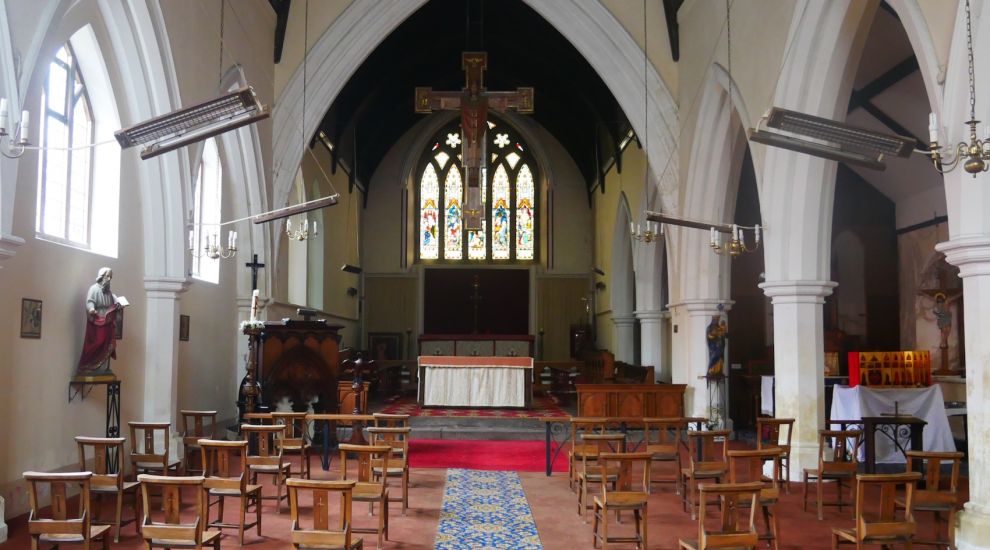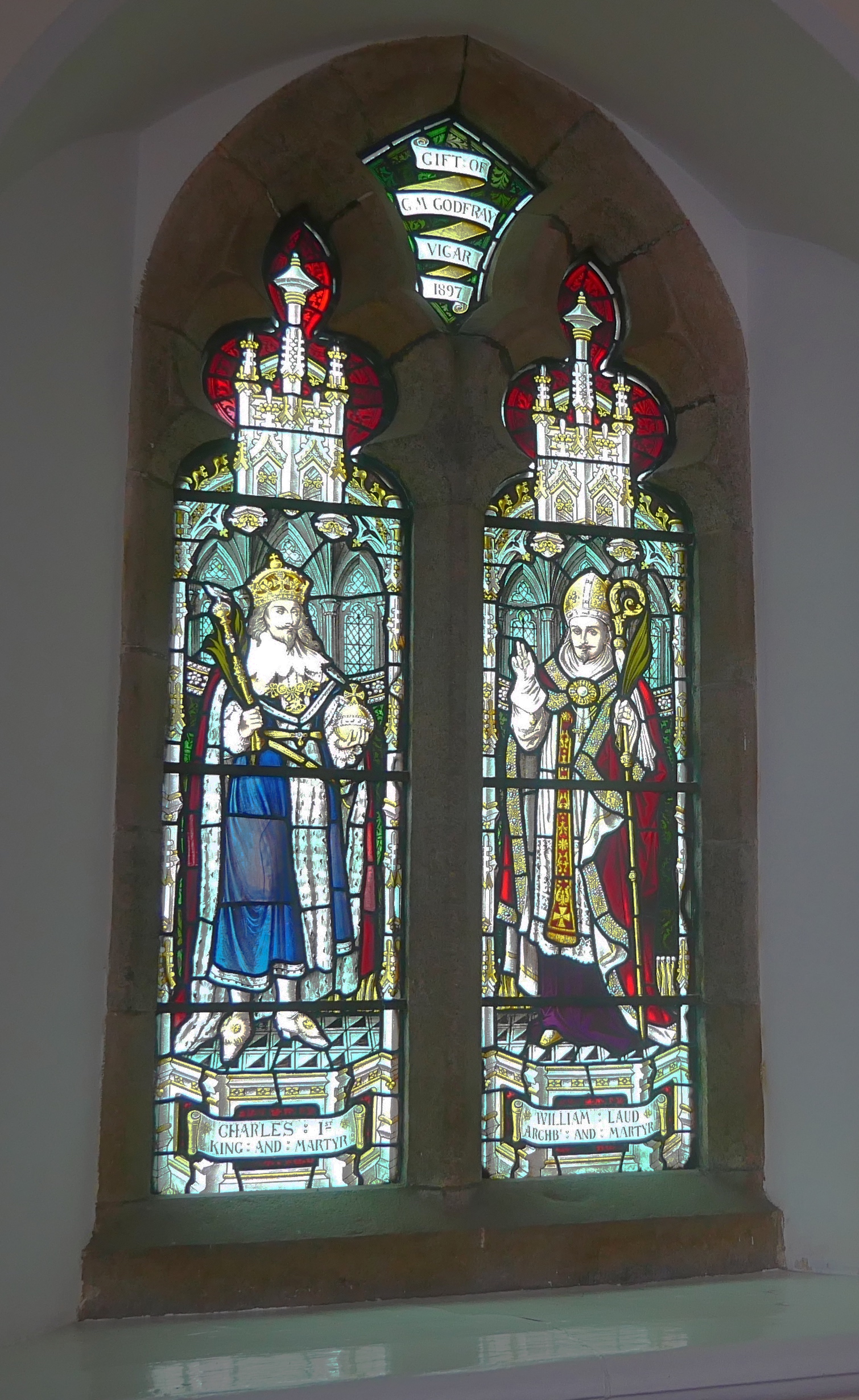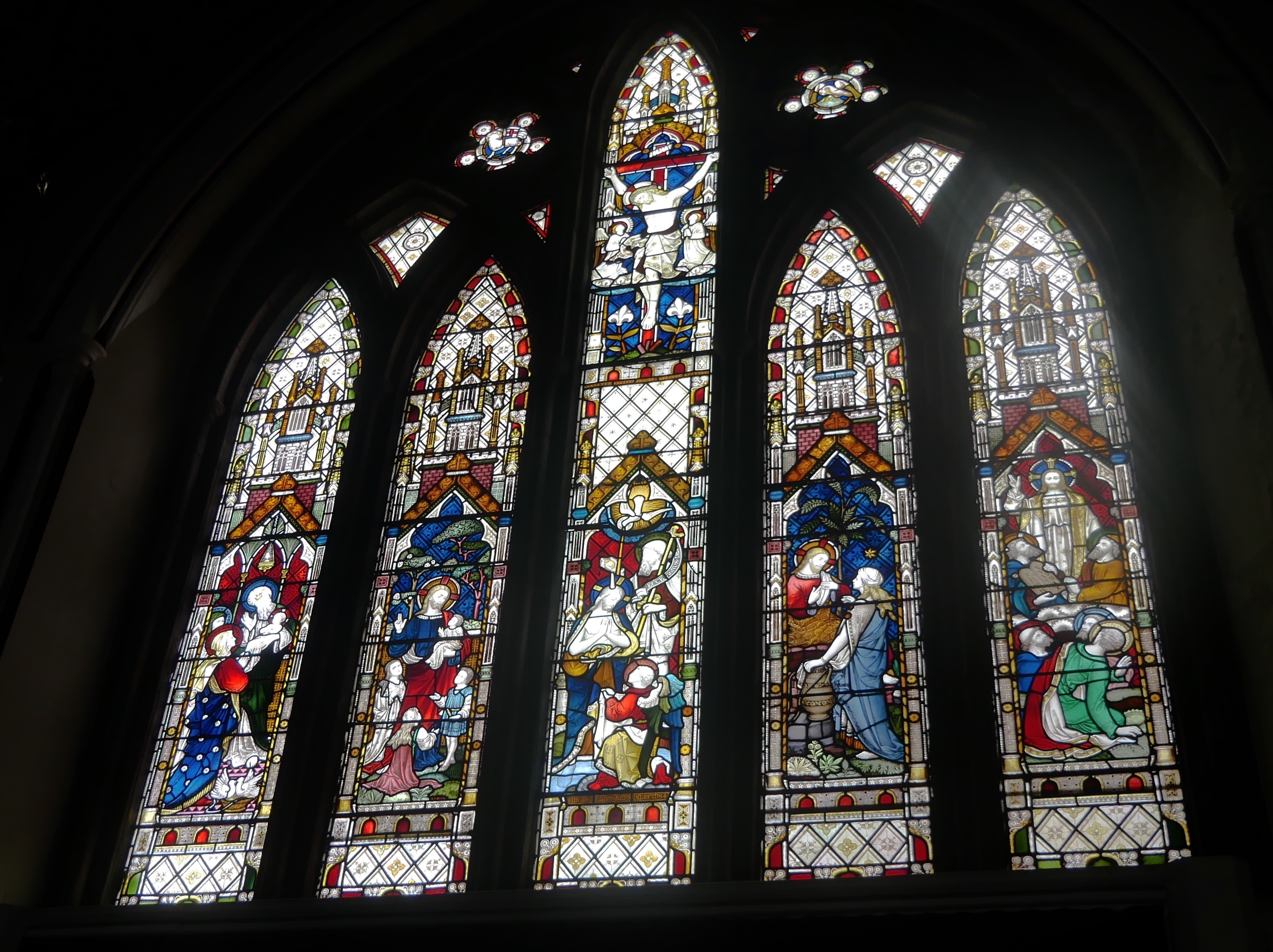


The future of a church that has stood in town for more than 150 years is hanging in the balance.
A number of options have been suggested for the historic Parish Church of St Simon on Great Union Road in St. Helier - including turning it into a community centre for recently released prisoners.
However, due to pushback from external heritage advisers, All Saints Church, who are responsible for the building, have been unable to fulfil their ambitions, and are now left still deciding what the future will hold for the steadily deteriorating church.
Express delved into the history of the church and explored the options on the table for its future...
On August 6 1939, a couple were married in the Parish Church of Saint Simon, an Anglican Church that still sits just behind St. Thomas's Church.
Pictured: The foundation stone of 'the Parish Church of Saint Simon' was laid in 1865.
Shortly after this wedding, war was declared in September, and by around the 10th of that month, the husband was called up to serve.
In 1940, his wife followed him to where he was billeted in Aldershot, and, in 1941, their daughter was born.
Now, 80 years on, their daughter, Jean Le Cornu, is Warden of the very Church which began her parents' journey all those years ago.
Video: A tour of the Parish Church of Saint Simon, which opened in 1866, and was consecrated in 1869.
The Parish Church of Saint Simon was built in 1865 and opened in 1866, with a committed congregation built up prior to this.
According to a history of the Church written for the island's Church 'Pilot' magazine in 1981, its congregation was predominantly gathered through the efforts of Mission Priest Josiah Mitchell in the early 1860s, on the orders of the Rector of St. Helier, Phillipe Filleul.
"He was a priest of the sailors, and, from what I can gather, sailors used to come when they were in pull to this church, and Columbus Street and Great Union Road had a lot of fishermen's cottages," Ms Le Cornu explained.
Mitchell reportedly left shortly after it opened due to a disagreement with Rector Filleul.
It still has the title of the 'Parish Church of Saint Simon', as it became a Parish in the 1870s, and was only later changed 100 years later in the 1970s when it merged districts with All Saints.
Taking Express on a tour around of the Church as it stands now, Ms Le Cornu explained how a century-and-a-half of Jersey and Anglican history is woven into its fabric - from the stained glass windows to images portraying the stations of the cross, inscriptions detailing past Vicars, and a grand old Church organ still in the wall.
While many of these are standard features of a church, Saint Simon contains several unique features too - among them, one of the few stained glass images of Charles I in the British Isles.

Pictured: A stained glass image of Charles I and clergyman, William Laud.
In a corner is the Church's ornate Lady Chapel too where visitors can see where incense would have hung, as well as a vividly coloured statue of Our Lady watching over it.
Coming up to the top of the Church, visitors pass under a strikingly crafted hanging statue of the Cross, up to the high altar and the choir stalls.
Sitting on the altar is a crucifix "designed as a war memorial by Ninian Comper, 1919", according to C E B Brett's Buildings in the town and parish of St. Helier.
Pictured: The Church's Lady Chapel.
Next to this altar is a large organ, and, overseeing all of the Church above it, an elaborate stained glass window depicting the life of Christ.
Names of local contributors stand out on the Church's paintings and walls, ranging from its first Vicar, John James Balleine, to Albert William Resch, a Priest who passed away in 1910.
According to Ms Le Cornu, up until a few years ago, there were still services for the small group who attended - by that point the High Church custom that the Church had been associated with in earlier years had changed.
"This was functioning until four years ago, but only every third week - the vicar of All Saints would come down and hold a communion service for the people who came," she explained.
However, she said that when the two Church Wardens retired, there were only two people left still attending the services, who then moved to All Saints.
Since then, over the last four-and-a-half years since Ms Le Cornu took over, the Church has been used intermittently by two other congregations - first, the Greek Orthodox Church, and then last year the Romanian Orthodox Church.

Pictured: The stained glass window overlooking the altar.
Icons left by Greek Orthodox churchgoers are still scattered around the Lady Chapel, as well as the chairs for those who did use the Church last year, spaced out for churchgoing in the covid era.
However, both have now "dwindled out" as Ms Le Cornu put it, leaving the building again empty for long periods of time.
Though there are occasional services with All Saints, such as the Stations of the Cross on Good Friday, and some Christmas services, Ms Le Cornu said that the Church isn't otherwise used.
"It is more than sad that this beautiful building is left," she said.
Indeed, this disuse is seen in the state of the Church itself - though the beauty of the stained glass windows and architecture still shines through, from a cursory glance, debris can be spotted falling from the roof onto the altars, damp is crawling up the pillars, and paint and plaster are chipping off the walls.
Pictured: The Church is deteriorating, with damp all around the building and up the pillars.
Outside, one of the gates is rusted and the fittings have come away from the wall - something Ms Le Cornu said All Saints is struggling to find someone to repair.
The Church Hall next to it is also filled with damp too. "I have to be careful when I go and check it not to walk on parts of the floor because it's rotting," noted Ms Le Cornu.
"Nothing's been done, I'd say, for well over 50 years, which is terribly sad."
But it's not due to lack of ideas.
Ms Le Cornu recalled that a number of years ago, the Christians Together in Jersey Housing Trust had floated the idea of turning the Church and its adjacent hall into a facility to help recently released prisoners get back on their feet.
The hall would act as a bedsit to released prisoners who were struggling to find somewhere to live, while the Church itself would have an area in its centre that would function as a community centre for them to work on crafts they had honed in prison.
Pictured: Ms Le Cornu said that under development ideas, the altar would have remained untouched as it was, as a quiet area for people to pray in.
"The idea was people coming out of prison would have bedsits, and they usually learn in prison something like art, woodwork, some craft, so we were going to divide up the church, so that they would have places to do their work," Ms Le Cornu said.
"A gentleman who'd been a prison chaplain would have come to oversee it."
The plans would have seen the high altar area remain untouched, and stay a place for quiet prayer, as would the general architecture of the building.
However, due to the building's Listed status, external advisers on the site's heritage disagreed on the development, and the idea was eventually scrapped, despite the efforts of the Church and Trust.
When contacted for comment, a spokesperson for the Trust said of the development that “after looking into the possibility of this, the cost… to look at this was excessive hence not possible.”
Pictured: The name of the current Reverend of All Saints, the Reverend David Grantham, who has also performed services at Saint Simon, is due to be added.
Ms Le Cornu explained that refurbishments were difficult for the Church to do on its own - with such a small congregation, she said they simply did not have the funds for its upkeep.
"I keep coming to check it and I just see it's falling apart slowly... Look, de-list this please so that something could be done, and somebody with money needs to do it," she said.
"I don't think the outside of the Church should be de-listed, because it's a beautiful building and it's solid - it's just this awful damp inside, and everything needs to be re-plastered and put in good condition."
Pictured: The Church organ, which is no longer regularly tuned. The Church had tried to sell it, but, as Ms Le Cornu laughed, "Nobody wants a big organ!"
If the Church is not able to act, Ms Le Cornu said they may have no choice but to sell the historic building, letting it fall into private hands, as it may become unsustainable to keep.
"We have to pay double insurance, because it's not occupied; we pay parish rates; we have a car park, but the money from that goes to the Parish share.
"We're just living on what's left in the bank account, and when that's gone, I don't know at all."
Comments
Comments on this story express the views of the commentator only, not Bailiwick Publishing. We are unable to guarantee the accuracy of any of those comments.